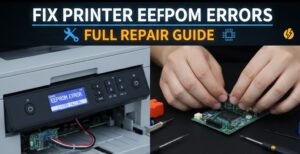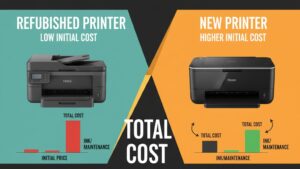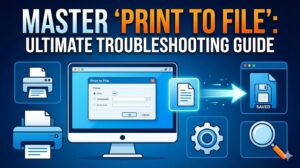Introduction
The inkjet vs laser printer cost debate confuses many shoppers standing in the electronics aisle. You see a cheap inkjet for $50 and a laser printer for $200, and your wallet tells you to grab the inkjet. But wait—that decision might cost you hundreds of dollars more over the next few years.
Most people only look at the price tag on the box. They ignore the hidden costs that pile up with every print job. Ink cartridges, toner replacements, paper handling, and maintenance all affect your total spending. Some printers that seem affordable upfront become money pits, while others pay for themselves within months.
This guide reveals the complete financial picture. You’ll discover exactly which printer type saves money based on your printing habits, whether you print occasionally at home or constantly in a small office. Let’s break down the real numbers so you can make a smart choice.
What Is the True Cost of Printer Ownership?
When comparing printer costs, you need to think beyond the purchase price. The total cost of ownership includes everything you’ll spend during the printer’s lifetime.
The upfront cost is what you pay at the store or online. Inkjet printers typically cost $50 to $300 for home models, while laser printers range from $150 to $500 for basic versions.
Cost per page measures how much each printed sheet costs you. This number includes ink or toner divided by how many pages each cartridge produces. Inkjets often cost 5 to 10 cents per page, while lasers average 2 to 5 cents per page.
Replacement supplies mean more than just ink or toner. You’ll also need to replace maintenance kits, drums, and fusers over time. These costs vary significantly between printer types.
Energy consumption affects your electricity bill. Laser printers use more power because they heat up to fuse toner onto paper. Inkjets consume less energy overall.
Lifespan matters too. A quality laser printer might last 5 to 10 years with proper care, while inkjets typically last 3 to 5 years. According to Consumer Reports’ printer buying guide, considering the expected lifespan helps calculate true ownership costs.
5 Key Factors That Determine Inkjet vs Laser Printer Cost
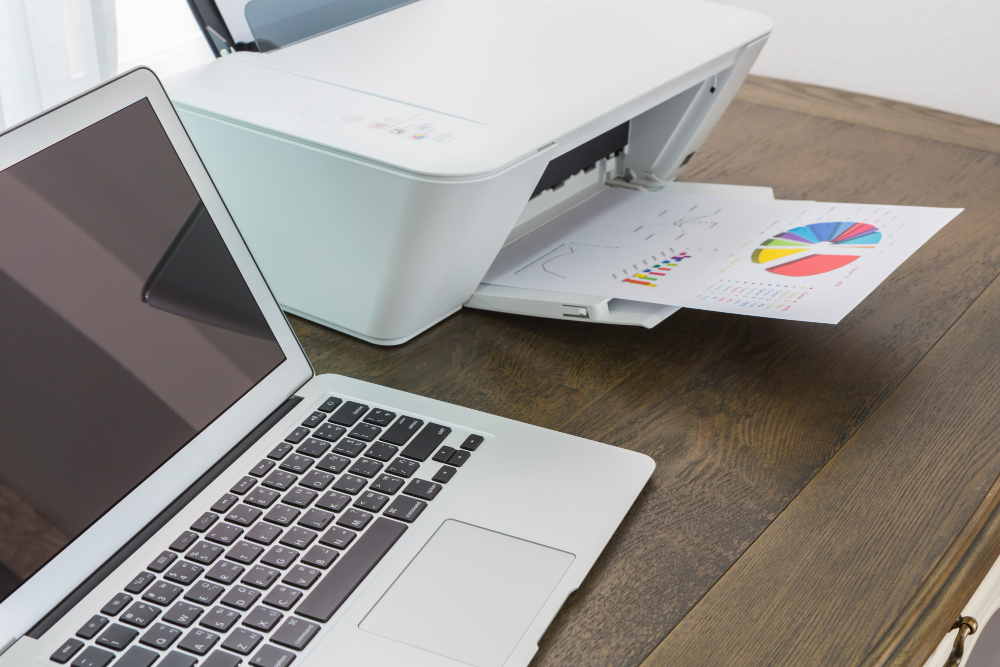
Factor 1: Your Monthly Print Volume
How much you print dramatically changes which printer costs less. If you print fewer than 100 pages monthly, an inkjet might cost less overall. The low purchase price offsets the higher per-page costs.
For 100 to 500 pages monthly, the choice becomes trickier. You’re in the zone where laser printers start showing their value. Calculate your expected page count and multiply by the cost per page for each printer type.
Above 500 pages monthly, laser printers almost always win. The higher upfront cost disappears quickly when you’re printing hundreds of pages. A laser printer might save you $200 or more annually compared to an inkjet at this volume.
Consider your pattern too. Occasional bursts of heavy printing favor lasers because inkjet cartridges can dry out between uses. Consistent moderate printing works fine for either type.
Factor 2: Color vs Black and White Printing
Black and white printing costs significantly less than color, regardless of printer type. If you mainly print text documents, a monochrome laser printer offers the absolute lowest cost per page—often under 2 cents.
Color laser printers cost more upfront ($250 to $600) but deliver vibrant prints for 8 to 15 cents per page. Color inkjets range from 5 to 20 cents per color page depending on coverage and cartridge type.
For occasional color printing, consider a black and white laser for everyday documents and use a local print shop for rare color jobs. This hybrid approach often costs less than owning a color printer you rarely use.
Photo printing requires different math. Inkjet photo printers produce better quality images than color lasers. If you print photos regularly, factor in special photo paper costs (20 to 50 cents per sheet) along with ink.
Factor 3: Cartridge Yields and Replacement Frequency
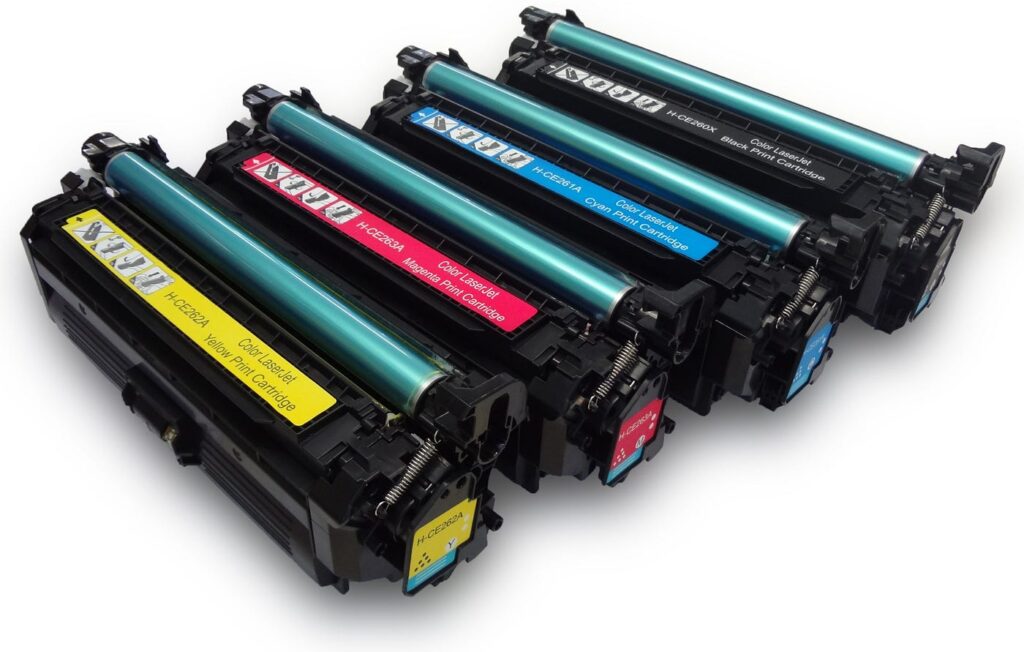
Standard inkjet cartridges print 200 to 400 pages and cost $15 to $30 each. High-yield cartridges print 600 to 1,000 pages for $30 to $50. You’ll need separate cartridges for each color, multiplying the expense.
Laser toner cartridges print 1,500 to 3,000 pages (standard) or 5,000 to 10,000 pages (high-yield). They cost $50 to $150 but last much longer than inkjet cartridges.
Calculate how often you’ll buy replacements. Printing 200 pages monthly means buying inkjet cartridges every month or two. The same volume with a laser printer means buying toner every 7 to 15 months.
The convenience factor matters too. Constantly running to the store for ink cartridges wastes time and money. Less frequent toner purchases reduce hassle.
Tank-based inkjet systems change this equation. Models with refillable ink tanks cost more upfront ($200 to $400) but include enough ink for 6,000 to 14,000 pages. This dramatically lowers cost per page to compete with lasers.
Factor 4: Maintenance and Repair Costs
Inkjet printers need regular maintenance to prevent clogs. Print heads can become blocked if you don’t use the printer weekly. Cleaning cycles waste ink, adding hidden costs.
Many inkjets run automatic cleaning every time you turn them on. This uses small amounts of ink even when you’re not printing. Over a year, these cleanings can waste the equivalent of several cartridges.
Laser printers require less frequent maintenance but more expensive repairs. Replacing drums costs $100 to $200 every 12,000 to 50,000 pages. Fusers cost $150 to $300 and last similar durations.
However, laser printers generally need fewer repairs overall. They have fewer moving parts that contact ink, so there’s less opportunity for clogs and smears.
Budget $50 to $100 annually for inkjet maintenance supplies like cleaning solution and replacement print heads. Budget $100 to $200 every 2 to 3 years for laser printer maintenance parts.
Factor 5: Speed and Productivity Value
Time is money, especially in business settings. Laser printers print 20 to 40 pages per minute, while inkjets print 5 to 15 pages per minute.
If you’re printing a 100-page report, a laser finishes in 3 to 5 minutes. An inkjet takes 7 to 20 minutes. This speed difference affects productivity when you print regularly.
Laser printers warm up faster and handle larger print jobs without overheating. Inkjets can struggle with heavy workloads, requiring cooling breaks between large jobs.
For home users printing occasionally, speed matters less. But for small businesses or students printing frequent assignments, the time savings justify laser printers’ higher costs.
Calculate the value of your time. If waiting for prints interrupts your work and costs you productive hours, the faster printer effectively costs less.
Real-World Cost Scenarios
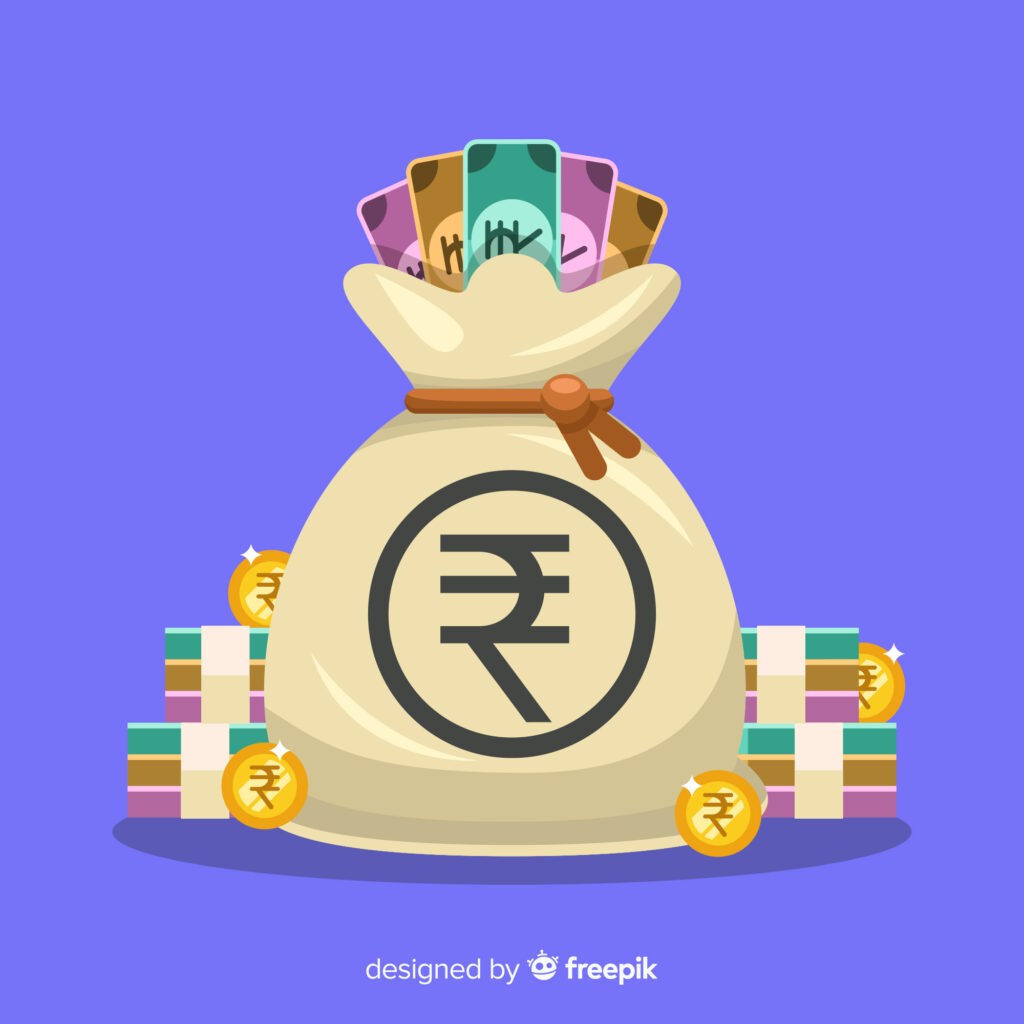
Let’s compare actual ownership costs over three years for different user types.
Light home user (50 pages monthly):
- Inkjet total: $200 (printer) + $540 (ink at 10¢/page) = $740
- Laser total: $250 (printer) + $180 (toner at 4¢/page) = $430
- Winner: Laser saves $310
Heavy home user (300 pages monthly):
- Inkjet total: $200 + $3,240 (ink) = $3,440
- Laser total: $300 + $1,080 (toner) = $1,380
- Winner: Laser saves $2,060
Small office (1,000 pages monthly):
- Inkjet total: $400 (business inkjet) + $10,800 = $11,200
- Laser total: $500 + $3,600 = $4,100
- Winner: Laser saves $7,100
Photo enthusiast (100 pages monthly, mostly photos):
- Photo inkjet total: $300 + $1,800 (specialized ink/paper) = $2,100
- Laser total: Not suitable for photo quality
- Winner: Inkjet (only viable option)
These scenarios show why volume and purpose matter more than upfront price.
Cost-Saving Tips for Both Printer Types
Choose high-yield cartridges whenever possible. The per-page cost drops significantly compared to standard cartridges. Yes, they cost more upfront, but the math always favors high-yield.
Buy third-party or remanufactured cartridges carefully. Some work perfectly and cost 30 to 50 percent less. Others cause printer damage or void warranties. Research brands thoroughly and check customer reviews.
Use draft mode for internal documents. This setting uses less ink or toner and prints faster. Save high-quality settings for final copies and presentations.
Print in black and white by default. Many documents don’t need color. Configure your printer to default to monochrome and manually select color when needed.
Subscribe to ink delivery services if available. HP Instant Ink, Epson ReadyPrint, and similar programs charge monthly fees based on pages printed rather than cartridge purchases. For some users, these subscriptions reduce costs by 50 percent.
Common Mistakes When Calculating Printer Costs
Ignoring Your Actual Printing Needs
Many people buy based on what they think they’ll print rather than their actual habits. Track your printing for a month before deciding. Count pages, note color vs black and white, and identify patterns.
Forgetting About Ink Drying
Inkjet cartridges dry out if unused for weeks. If you print sporadically, you’ll throw away partially used cartridges. This hidden waste makes inkjets much more expensive for occasional users than the math suggests.
Overlooking Subscription Services
Manufacturers now offer subscription models that change the cost equation. These services can make inkjets competitive with lasers for certain users. Always calculate subscription costs versus traditional cartridge purchases.
Buying Based on Sale Prices Alone
That incredible Black Friday deal on a $40 inkjet might be a trap. Manufacturers often sell printers at or below cost, making profits on expensive replacement cartridges. A cheap printer with expensive ink costs more than a pricier printer with affordable refills.
Not Considering Future Needs
Your printing habits might change. Students starting college will print more. Growing small businesses need increased capacity. Buy for where you’ll be in two years, not just today.
Focusing Only on Purchase Price
This is the biggest mistake. A $60 inkjet that costs $30 in ink monthly becomes more expensive than a $300 laser in just one year. Always calculate total ownership costs.
Assuming All Printers in a Category Cost the Same
Wide variation exists within both inkjet and laser categories. Tank-based inkjets cost much less per page than cartridge models. Color lasers cost more than monochrome. Research specific models rather than making assumptions based on printer type.
How to Calculate Your Personal Break-Even Point
Determine your monthly page count first. Look at past printing or estimate based on your typical needs.
Find the cost per page for specific models you’re considering. Divide the cartridge price by its page yield. Don’t rely on manufacturer estimates alone—check independent reviews for real-world yields.
Calculate the difference in cost per page between your options. For example, if an inkjet costs 8 cents per page and a laser costs 3 cents per page, that’s a 5-cent difference.
Divide the price difference between the printers by your monthly savings. If the laser costs $200 more but saves you $15 monthly (300 pages × 5 cents), you’ll break even in 13 months.
Any use beyond the break-even point represents pure savings. A printer lasting 3 years means 23 months of savings after the 13-month break-even period.
This calculation reveals which printer truly costs less for your specific situation.
Frequently Asked Questions
Q: Are ink tank printers cheaper than laser printers?
Ink tank printers like Epson EcoTank cost less per page than traditional inkjets and compete with laser printers. They cost more upfront ($200-$400) but include enough ink for thousands of pages. For moderate to heavy users, they offer similar long-term costs to laser printers.
Q: How long do inkjet and laser printers typically last?
Laser printers usually last 5 to 10 years with proper maintenance. Inkjet printers typically last 3 to 5 years. However, lifespan depends heavily on usage volume and maintenance quality. A well-maintained printer of either type can exceed these averages.
Q: Can I save money buying refilled cartridges?
Refilled or remanufactured cartridges can save 30 to 70 percent compared to original cartridges. Quality varies widely by supplier. Some work perfectly, while others leak, produce poor prints, or damage printers. Buy from reputable companies with warranties and good reviews.
Q: Is it worth repairing an old printer or buying new?
If repair costs exceed 50 percent of a new printer’s price, buy new. Technology improvements mean newer printers often cost less to operate. However, for expensive laser printers under 3 years old, repairs usually make financial sense.
Q: Do wireless printers cost more to operate?
Wireless capability doesn’t significantly affect operating costs. The printing technology (inkjet vs laser) determines costs, not the connection method. Wireless adds convenience without meaningful cost differences.
Conclusion
The inkjet vs laser printer cost winner depends entirely on how you’ll use it. Laser printers dominate for text-heavy printing above 100 pages monthly, offering lower per-page costs and less maintenance. Inkjets make sense for occasional printing, photo work, and users who need affordable upfront prices.
Tank-based inkjets blur the lines, providing near-laser cost per page without sacrificing photo quality. They represent the best middle ground for families and small offices with mixed printing needs.
Don’t let the sticker price fool you. Calculate your expected three-year costs including cartridges, maintenance, and your time. The printer that costs $150 more initially might save you $500 over its lifetime.
Choose based on math, not marketing. Track your printing habits, run the numbers for your specific situation, and select the printer that truly costs less for your needs. Your wallet will thank you every time you press print.
Printer Firmware Update: Essential Guide You Can’t Ignore Read More.


